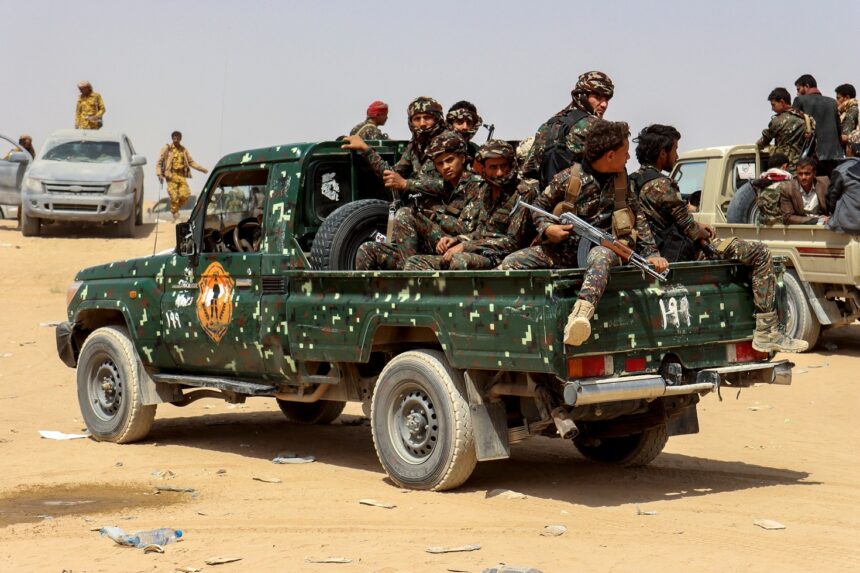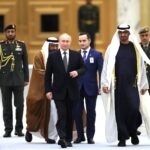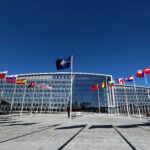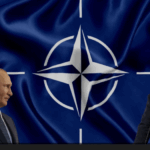Summary by Geopolist | Istanbul Center for Geopolitics:
The article from ISPI discusses the importance of strengthening cooperation between NATO and Gulf Cooperation Council (GCC) countries in addressing the challenges posed by non-state armed actors. It highlights the evolving nature of threats from groups like ISIS and al-Qaida, which necessitates a coordinated response to maintain regional stability and security.
The GCC countries, including Saudi Arabia, Qatar, Bahrain, and the UAE, have made strides in counter-terrorism measures, such as tightening financial regulations and enhancing penalties for terrorism-related crimes. However, the diverse political and strategic interests among GCC members sometimes hinder unified action against these threats.
NATO’s involvement in the region, exemplified by initiatives like the Istanbul Cooperation Initiative (ICI), aims to foster collaboration on security issues. The article underscores that a unified approach and clear definitions of terrorism are crucial for effective cooperation. Moreover, the presence of external actors like the US and European countries also influences the dynamics of regional security strategies.
The piece concludes by suggesting that both NATO and GCC countries need to adapt to the changing landscape of non-state threats and work together to develop comprehensive strategies that address both immediate security concerns and long-term stability in the region.
Read the full article below.
The NATO 2024 Summit in Washington will focus on Ukraine. However, this time the Southern neighbourhood is likely to be a relevant discussion topic. NATO has invited Arab partners to join sideline events of the anniversary summit. Furthermore, 2024 marks the 20th year since the launch of the Istanbul Cooperation Initiative (ICI), the Alliance’s practical cooperation framework with the Gulf monarchies joined by the United Arab Emirates (UAE), Qatar, Bahrain and Kuwait.
Since 2022, the Middle East and North Africa (MENA) region has firmly opted for neutrality between Russia and Ukraine. However, Gulf’s diplomacy on the issue has been closely watched by NATO. Saudi Arabia organized talks in Jeddah with Ukraine to discuss Kyiv’s peace formula (August 2023), a meeting that saw for the first time American and Chinese representatives together; Saudi Arabia and the UAE brokered prisoners exchanges between Russia and Ukraine, and Qatar negotiated a deal to return Ukrainian children displaced by Moscow’s invasion. The Atlantic Alliance hopes now to enlarge the consensus about the need to respect Ukraine’s sovereignty. Among the states of the Gulf Cooperation Council (GCC), only Qatar (which joined the US-led and NATO-backed Ukraine Defense Contact Group in 2022), agreed to sign the joint declaration of the Summit on Peace in Ukraine recently held in Switzerland (June 2024) that reiterated the principles of “territorial integrity and sovereignty of all states”.
But Gulf partners will likely have their eyes on Iran and its non-state armed network, that continue to pose a big security challenge to regional stability despite the restart of diplomatic relations with neighbours. The Ukraine crisis has greatly contributed to narrow NATO and GCC countries’ perceptions about the dangers of the Iranian missile and drone program, and the threat coming from Iranian partners and proxies in the MENA. Cooperation between Iran and Russia has expanded. Iran provides to Russia drones to strike Ukraine, and smuggles to Yemen’s Houthis most of the drones and missiles the group launches against commercial vessels in the Red Sea and, previously, Saudi and Emirati territories.
So there’s rising room for political dialogue. Advancing NATO-Gulf partners’ cooperation on non-state armed groups in the MENA means to address varied topics of shared concern, from air defense to maritime security, from illicit trafficking and smuggling to border security. For this reason, the non-state armed groups issue would be key to relaunch the cooperation. Security threats to Gulf monarchies’ economic diversification goals and projects mainly come today from non-state armed actors. These groups also represent a menace for the stability of the Alliance’s partners bordering the Mediterranean, thus eroding Southern flank security. Therefore, NATO should focus on the shared challenge of non-state armed actors to reenergize the partnership with the Arab states, and, more specifically, with GCC members, working to formally include all GCC countries as NATO’s partners.
The Background: From Here We (Should) Restart
The Gulf monarchies are working hard to adapt their defence strategies to the connectivity age. Post-oil projects raise a number of new security and defence challenges, from hosting mega-events to securing new cities and expanded port infrastructures. In so doing, the GCC states are pursuing two main goals. The first is deterring conventional and, most of all, asymmetric threats from rivals while gradually advancing towards greater autonomy in the defence field. The second is rethinking foreign policy and defence alliances in the current multipolar global order, thus progressively moving beyond an exclusively “US-centred” defence model.
From a strategic point of view, the Gulf has become even more decisive to the interests of NATO and its member states since the Russian invasion of Ukraine in 2022, also because of diversified energy supply, trade and infrastructures. The India-Middle East-Europe Economic Corridor (IMEC), a 2023 project built upon the Abraham Accords (2020), and the EU Commission’s Strategic Partnership with the Gulf (2022) could be a game-changer not only in economic and energy terms, but also at the strategic level. Enhanced connectivity would strengthen in fact inter-regional security and defence cooperation, consolidating goals shared by the Gulf monarchies and NATO. This could also support Western containment of China’s strategic penetration into the Gulf region.
The time could be ripe for NATO and the GCC states to engage further in the defence field, moving beyond the ICI format. The ICI, a practical cooperation framework established in 2004, has been de facto overcome by reality: Saudi Arabia and Oman, which opted out of the partnership in the beginning, have often joined tailored initiatives organised by the ICI, for instance on military education. In December 2023, NATO Secretary General Jens Stoltenberg made a landmark visit to Saudi Arabia, the first ever by a sitting Secretary General. During a public discussion at the Saudi Armed Forces Command and Staff College, Stoltenberg said “I believe there is huge potential for NATO to do more with Saudi Arabia because we have mutual challenges ”, overtly mentioning maritime security, the protection of critical infrastructure, the fight against terrorism, innovation and military education.
The GCC, NATO and the member states of both organisations in fact face shared challenges in the Middle East, starting with maritime security and the proliferation of ballistic missiles and drones. Nevertheless, they often display different political perspectives, policy priorities and, most of all, threat perceptions. The Houthi crisis epitomises this phenomenon. Since late 2023, Houthi attacks from Yemen against international commercial vessels in the Red Sea, the Bab el-Mandeb and the Gulf of Aden waterway have rapidly changed the perception of Western stakeholders vis-à-vis the threat emanating from the Iranian-backed Houthis, aligning the perception of NATO members more closely with that of the GCC states at last. Other relevant NATO-GCC states issues include the protection of critical infrastructures, countering terrorism and cyber threats, weapons smuggling and drug trafficking. The GCC states also have to deal with border security concerns (the Saudi-Yemeni and Saudi-Iraqi permeable frontiers), and territorial disputes (think to the UAE-Iran dispute around Abu Musa and the Greater and Lesser Tunb islands). These issues and threats are all related to Iran and/or to Iranian-related non state armed actors, comprising drug trafficking from Lebanon and Syria.
Currently, the rise of asymmetric and offensive capabilities coming from Iranian supported non-state armed actors in the MENA – Hamas in Gaza, Hezbollah in Lebanon, pro-Assad forces in Syria, the Popular Mobilisation Forces in Iraq, the Houthis in Yemen – is the most pressing Middle Eastern issue for the GCC and NATO and their respective member states. However, similar threats from jihadi groups, such as al-Qaeda in the Arabian Peninsula (AQAP) and “Islamic State”, also need to be watched and prevented, since they could escalate in the medium to long term as a result of the war in Gaza, US-UK raids against the Houthis in Yemen, and the Abraham Accords.
Non-state armed actors: the most pressing “why” of potential NATO-GCC states cooperation
Both the GCC states and NATO are interested in containing and, if possible, undermining non-state armed actors to protect territories and global waterways.
The role of Iranian and Russian links
With the exception of Libya, almost all non-state armed actors in MENA are backed by Iran, as allies or proxies. The so-called “axis of resistance” against Israel and the US is an Iran-led network of armed players with different levels of dependency on Tehran. Nuances are mainly due to group genealogy, national agendas and sources of income. With regard to information and propaganda, these actors have increased the cooperation level, even providing each other with plausible deniability after attacks (for instance, against Saudi Aramco’s plants in 2019). Some players have “pragmatic” links with Russia, even though “coordination remains sporadic” so far. In Yemen, the Houthis would have stated to provide safe passage for Russian and Chinese commercial vessels transiting the Red Sea, although pledges have been sometimes disregarded. The emerging connections between non-state armed groups, Iran and Russia, especially in Syria, epitomise the strategic intertwining of NATO’s Southern and Eastern flanks.
The control of transit points and maritime coasts
Iranian-backed non-state armed actors control many transit points in the Levant, allowing informal economy, smuggling and fighter routes to grow between Iran, Iraq, Syria and Lebanon. Moreover, these are also consolidating their hold over coastal areas, carving-out maritime linchpins for economic and, potentially, offensive activities. This could raise new maritime threats against energy and trade security, with potential risks for NATO’s Southern flank and for Arab partners. In Yemen, the Houthis control Hodeida and most of the Red Sea coast; in Lebanon, Hezbollah’s forces control the Southern coast; in Syria, the port-city of Baniyas (Tartous governorate) is a strategic corridor on the Mediterranean Sea linking the Syrian regime and pro-Assad groups with Hezbollah and Iran.
The erosion of state institutions
For NATO, non-state armed groups are potential threats also because of competitor interference, especially from Iran and Russia. Furthermore, these non-state players erode weak state institutions in many Arab states, reinforcing local loyalties and agendas. This challenges both domestic stability (in countries like Lebanon, Iraq, Syria, Yemen and Libya), and the security of neighbouring Arab partners of NATO. Most of the non-state armed groups are also multifaceted, hybrid players. The “armed face” is no longer the only dimension of power enforcement vis-à-vis local communities: since the 2010s, non-state armed groups have strengthened their economic, social and welfare-like roles, profiting from waning state capacity. Non-state armed actors have succeeded in building illegal and informal economy networks, and even infiltrating the state economy, with particular regard to the energy sectors and critical infrastructures, thus de facto governing portions of territory. They have sometimes even turned into political players, capturing state institutions.
Limits to crisis management and cooperative security
NATO and its Arab partners cannot effectively join forces in crisis management and cooperative security in the MENA region if they lack a shared threat analysis regarding non-state armed groups and hybrid actors. This does not mean sharing the same threat perception – something that would be challenging even between NATO member states – but agreeing upon a framework for defining and addressing the issue to better support cooperation and interoperability. At the July 2016 Warsaw Summit, NATO officially adopted “projecting stability” as part of its defence and deterrence strategy. At the 2021 Brussels Summit, NATO leaders endorsed the NATO 2030 Agenda, adopting a proposal entitled “Boost Training and Capacity-Building”, by which the Allies “agreed to step up NATO efforts to build the capacity of our partners in areas like counter-terrorism, stabilisation, countering hybrid attacks, crisis management, peacekeeping, and defence reform, among others”. This means that the success of NATO strategy in the South is closely related to the enhancement and effectiveness of partnerships, especially in the presence of aggressive powers (Russia) and systemic threats (China).
The threat of non-state armed actors. Ideas for advancing NATO-GCC states cooperation
To advance cooperation, NATO and the GCC states should start finding common policy ground in defining and addressing non-state armed groups and hybrid actors.
Developing a NATO framework for non-state armed actors
NATO should develop a framework to study, deter and, where necessary, counter non-state armed groups and hybrid actors in the MENA region. NATO cannot effectively provide defence capacity-building to Arab partners without a theoretical framework – to be translated into a practical policies toolkit – for dealing with non-state armed groups and hybrid actors. NATO has had a strategy for countering hybrid warfare since 2015. However, the Alliance lacks a framework for addressing non-state armed groups in the MENA region, partly due to a lack of conceptualisation of the phenomena of non-state and hybrid actors.
Building a shared NATO-GCC states framework for non-state armed actors
After addressing the non-state armed groups issue at NATO level, the Alliance should engage with regional partners, starting with the GCC states, to develop a common framework for non-state armed groups and hybrid actors. For instance the ICI Policy Advisory Group, rallying officials, diplomats and representatives from the Alliance’s member states and the UAE, Qatar, Bahrain and Kuwait (ICI members), could host an enlarged NATO-Arab partners conversation on non-state armed groups and hybrid actors. The NATO-ICI Regional Centre in Kuwait, which opened in Kuwait City in 2017, could then translate a shared threat analysis into practical cooperation through its courses, in coordination with the NATO Defence College and the NATO Strategic Direction-South Hub (NSD-S HUB). The possible mandate review of the NSD-S HUB towards a joint civil-military entity, as recommended by the 2024 final report of independent experts on NATO’s Southern neighbourhood, would highly benefit this networking effort.
Supporting GCC states’ new security and defence capabilities
NATO should support GCC states in improving their capabilities to defend themselves from asymmetric threats arising from non-state and hybrid actors. The goal is supporting the defence transformation of the Gulf monarchies towards a post-oil model, thereby adapting security goals and tools to the new era. The NATO-ICI Regional Centre in Kuwait can play a prominent role. By 2020, the Centre had already activated courses covering border security, cyber-defence, chemical, biological, radiological and nuclear consequence management, critical infrastructure and energy security, maritime security, crisis management, and civil preparedness. On military education and capacity-building for partners, cooperation could be explored between NATO Defense College, the “reviewed” NSD-S HUB, and the new Gulf Academy for Strategic and Security Studies, an affiliate of the GCC whose headquarters were established in Abu Dhabi in 2023.
Overcoming the ICI: towards a flexible NATO-GCC states formula of practical defence cooperation
The ICI should be superseded by a wider, more flexible formula of practical defence cooperation that could be initially focused on addressing challenges and countering threats from non-state and hybrid actors. This would build upon NATO’s Framework Nations Concept (FNC). The new format could be designed as a 6+6 initiative, engaging the GCC states and six voluntary NATO members (for instance, the US, the UK, France, Italy, Germany, Spain or Greece, with Cyprus, which is neither a NATO member nor a partner, as a facilitator and/or observer), with a one-year rotating presidency. This agile formula, along the lines of the 5+5 Defence Initiative in the Western Mediterranean, would make it possible to bypass the reluctance of Saudi Arabia and Oman to join a NATO programme directly thanks to a loose format that preserves nationally-tailored initiatives. The 6+6 formula should focus on practical areas of shared interest (maritime security, protection of critical infrastructure, training and military education). The NATO-ICI Regional Centre in Kuwait should be the reference venue for networking, seminars, best practice sharing and practical activities.
By: Eleonora Ardemagni
Source: ISPI







